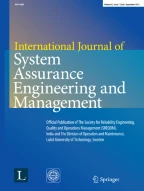Abstract
This paper presents the design of mobile robot visual navigation system in indoor environment based on fuzzy logic controllers (FLC) and optical flow (OF) approach. The proposed control system contains two Takagi–Sugeno fuzzy logic controllers for obstacle avoidance and goal seeking based on video acquisition and image processing algorithm. The first steering controller uses OF values calculated by Horn–Schunck algorithm to detect and estimate the positions of the obstacles. To extract information about the environment, the image is divided into two parts. The second FLC is used to guide the robot to the direction of the final destination. The efficiency of the proposed approach is verified in simulation using Visual Reality Toolbox. Simulation results demonstrate that the visual based control system allows autonomous navigation without any collision with obstacles.
Similar content being viewed by others
References
Alenya G, Crowley JL (2009) Time to Contact for obstacle avoidance. In: Proceedings. European conference on mobile robotics, (ECMR 2009), KoREMA, pp 19–24
Arnspang J, Henriksen K, Stahr R (1995) Estimating time to contact with curves, avoiding calibration and aperture problem. In: 6th international conference on computer analysis of images and patterns, CAIP’95, London, UK, pp 856–861
Ayache N, Sander PT (1991) Artificial vision for mobile robots: stereo vision and multisensory perception. MIT Press, Cambridge
Becerra HM, Sagüés C, Mezouar Y, Hayet J (2014) Visual navigation of wheeled mobile robots using direct feedback of a geometric constraint. Auton Robots 37(2):137–156
Benn W, Lauria S (2012) Robot navigation control based on monocular images: an image processing algorithm for obstacle avoidance decisions. Math Probl Eng. https://doi.org/10.1155/2012/240476
Boumehraz M, Habba Z, Hassani R (2018) Vision based tracking and interception of moving target by mobile robot using fuzzy control. J Appl Eng Sci Technol 4(2):159–165
Chao H, Gu Y, Napolitano M (2014) A survey of optical flow techniques for robotics navigation applications. J Intell Robot Syst 73:361–372
Corso J (2014) Motion and optical flow. College of Engineering, University of Michigan, Ann Arbor
Desouza GN, Kak AC (2002) Vision for mobile robot navigation. A survey. IEEE Trans Pattern Anal Mach Intell 24(2):237–267
Fantoni I, Sanahuja G (2014) Optic flow-based control and navigation of mini aerial vehicles. J Aerosp Lab 8:1–9
Font FB, Ortiz A, Oliver G (2008) Visual navigation for mobile robots: a survey. J Intel Robot Syst 53:263–296
Freda L, Oriolo G (2007) Vision based interception of moving target with nonholonomic mobile robot. Robot Autom Syst 55(5):419–432
Gupta M, Uggirala B, Behera L (2008) Visual navigation of a mobile robot in a cluttered environment. In: 17th world congress of IFAC, Seoul, Korea
Guzel MS, Bicker R (2011) Vision based obstacle avoidance techniques. In: Recent advances in mobile robotics (InTech), pp 83–108
Hamissi A, Bazoula A (2008) Fuzzy visual path following by a mobile robot. In: 1st Mediterranean conference on intelligent systems and automation (CISA08), Annaba, Algeria
Horn BK, Schunck BG (1981) Determining optical flow. Artif Intell 17:185–203
Huang L (2009) Velocity planning for a mobile robot to track a moving target—a potential field approach. Robot Auton Syst 57(1):55–63
Kahlouch S, Achour K (2007) Optical Flow based robot obstacle avoidance. Int J Adv Robot Syst 4:13–16
Kim Y, Noh S (2012) Fuzzy visual navigation using behavior primitives for small humanoid robot. Robot Intell Technol Appl AISC 208:823–834
Latombe J (1991) Robot motion planning. Kluwer Academic Publishers, Dordrecht
Lee D (1976) A theory of visual control of braking based on information about time-to-collision. Perception 5(4):437–459
Lucas BD, Kanade T (1981) An iterative image registration technique with an application to stereo vision. In: Proceedings: imaging understanding workshop, pp 121–130
Mai NA, Janschek K (2009) Bio-inspired optical flow interpretation with fuzzy logic for behavior-based robot control. In: 18th international workshop on robotics in Alpe-Adria-Danube Region, Brasov, Romania
Miguel A et al (2009) A Pan-Tilt camera fuzzy vision controller on an unmanned aerial vehicle. In: The 2009 IEEE/RSJ international conference on intelligent robots and systems, USA
Miguel A, Pascual C (2015) Vision based fuzzy control approaches for unmanned aerial vehicles. In: 9th conference of the European society for fuzzy logic and technology (EUSFLAT)
Passino KM, Yurkovich S (1998) Fuzzy control. Addison Wesley, Menlo Park
Saitoh T, Tada N, Konishi R (2009) Indoor mobile robot navigation by central following based on monocular vision. IEEJ Trans Electron Inf Syst 129:1576–1584
Serres JR, Ruffier F (2017) Optic flow-based collision-free strategies: From insects to robots. Arthropod Struct Dev 46:703–717
Serres J, Ruffier F, Viollet S, Franceschini N (2006) Toward optic flow regulation for wall-following and centring behaviours. Int J Adv Robot Syst 3(2):147–154
Shuzhi SG, Lewis FL (2006) Autonomous mobile robots, sensing, control, decision, making and applications. CRC, Boca Raton
Tajti F et al (2016) Optical flow based odometry for mobile robots supported by multiple sensors and sensor fusion. Automatica 57(1):201–211
Tasalatsanis A, Valavanis K, Yalcin Y (2007) Vision based target and collision avoidance for mobile robots. J Intell Robot Syst 48(2):285–304
Wang CW, Meng QH (2015) Obstacle avoidance for quadrotor using improved method based on optical flow. In: IEEE international conference on information and automation, Lijiang, China, pp 1674–1679
Zhang X, Wang Y, Fang Y (2016) Vision-based moving target Interception with a mobile robot based on motion prediction and online planning. In: IEEE international conference on real-time computing and robotics (RCAR), Angkor Wat, Cambodia, pp 17–21
Author information
Authors and Affiliations
Corresponding author
Additional information
Publisher's Note
Springer Nature remains neutral with regard to jurisdictional claims in published maps and institutional affiliations.
Rights and permissions
About this article
Cite this article
Nadour, M., Boumehraz, M., Cherroun, L. et al. Mobile robot visual navigation based on fuzzy logic and optical flow approaches. Int J Syst Assur Eng Manag 10, 1654–1667 (2019). https://doi.org/10.1007/s13198-019-00918-2
Received:
Revised:
Published:
Issue Date:
DOI: https://doi.org/10.1007/s13198-019-00918-2
